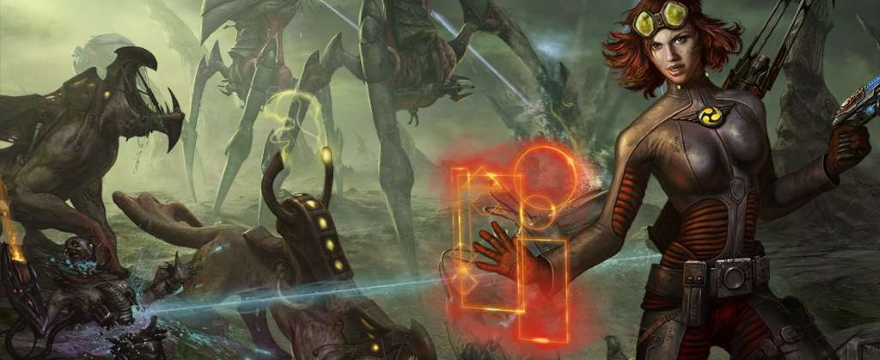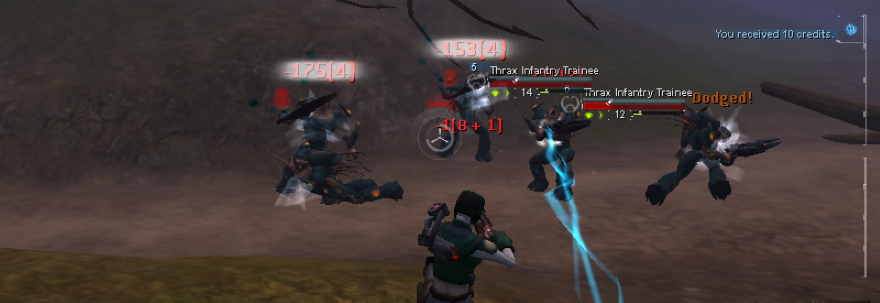
The story of Tabula Rasa begins, as so many others do, with 1997’s Ultima Online. Raph Koster and Richard Garriott’s online fantasy sandbox proved to be a smash hit and a moneymaker, sparking many follow-up MMORPG projects. Parent company Electronic Arts greenlit a sequel to UO, and the team got to work on the cumbersomely titled Ultima Worlds Online Origin.
As I detailed in an older Game Archaeologist column, the first sequel (yes, there were actually two in development) to Ultima Online fell prey to corporate cold feet. By 2001, EA reversed its intention to develop a sequel and pulled the plug on UWOO with the flimsy excuse that it didn’t want to create another title that would compete with its own product. Disgusted, many of the Ultima Online devs — including Garriott, Starr Long, and Jeremy Gaffney — left to strike out on their own and make a next generation MMO.
The new studio? Destination Games (a pun on their previous studio, Origin Games). The title? Well… that was a bit of a blank slate.
Tabula Rasa’s tabula rasa
From the start of the project, Destination Games and its MMO was hot stuff. NCsoft expressed interest right away and purchased the studio in June 2001, moving Lineage’s Jake Song over to help. This “dream team” set its sights on making a be-all, end-all MMORPG, with less grind and an aspiration of being a “theme park,” but it turned out that the team’s sights were a little too unrealistic.
The main problem came from a dysfunctional studio setup. Too many big names were piled onto the project with different visions and languages hindering the development. “Garriott confided that the game’s look never managed to coalesce into something compelling, despite countless iterations,” reported GameSpy in 2006.
By 2003, Jake Song left NCsoft entirely, 20% of the team was laid off, and the first version of Tabula Rasa was mostly scrapped as the remaining developers started over. This time, the game would focus on a western audience while it created a galactic war between the Allied Free Sentients (AFS) and an alien race known as the Bane. To help differentiate this MMO from the competition, Tabula Rasa would have both RPG and shooter elements baked into its DNA.
Icons and warfare
“Without warning or provocation, a fleet of alien spacecraft descended to Earth and launched a devastating attack,” the official backstory explained. “The Bane were impossibly advanced, merciless, and seemingly unstoppable. Our cities were annihilated, and mankind was on the brink of extinction. But the seeds for Mankind’s deliverance had been planted on our home centuries before by the Eloh, estranged cousins of the Bane. In Earth’s twilight hours, by fate or by design, we discovered the advanced technology they left behind and used it to create wormhole portals; doorways to other planets. These portals allowed the lucky and able to escape the confines of Earth and travel to a handful of alien worlds.”
In Tabula Rasa, players took on the role of foot troopers who battled the vastly superior Bane across different planets, Earth having been conquered five years earlier. To aid their fight, players would seek out and harness the power of Eloh “logos” — pictographs or hieroglyphics that bestowed great powers and buffs when used. This collection system was reportedly watered down from how it appeared in the first version of the MMO.
Garriott also aspired to work in “ethical parables” — akin to Ultima’s choices while pursuing virtues — as players went on missions. Players could also shape their character via tree-branching subclasses as they leveled. Later on, they could weave their DNA in with aliens to make hybrid races as opposed to a strictly human character.
Probably what most people remember about playing Tabula Rasa is that the battlefield felt dynamic, with Bane troops swarming in and control points being gained and lost. Certain missions couldn’t be completed if a control point wasn’t held by the AFS, which encouraged players to partake in the ongoing fight.
“The first element we wanted to focus on was fast-paced tactical combat,” Garriott pitched to the New York Times. “Number two was creating a dynamic battlefield where the player feels there is action going on around them all the time. And third was creating a story line that includes ethical parables and problems.”
Big names, small launch
Head start players got in just a day before Halloween 2007, with the official launch happening a few days later on November 2nd. Upon login, players were greeted by General British, Garriott’s alter-ego and counterpart to Ultima’s Lord British.
Even though Garriott’s British was a big name, arguably Sarah Morrison was bigger still. The red-headed soldier was the cover girl of Tabula Rasa, showing up pretty much any time the game was mentioned or promoted. Her in-game avatar was handled and written by a trio of NCsoft employees (April Burba, Amy Crider, and Gina Dionne), who said that Morrison had “a sharp sense of humor and presents the persona of someone who can handle herself in any situation, whether it’s in combat or when interacting with fellow AFS soldiers.”
Morrison was sacrificed on the altar of publicity at the month of the launch, appearing nude in the November 2007 issue of Playboy as part of a spread of video game females.
As for the launch of the $20 million MMORPG, it was not great (but not as bad as it could’ve been). Decent reviews cropped up in media publications as curious players subscribed to see the latest creation from Ultima’s braindaddy. Technical issues marred the day one experience, and Garriott later admitted that Tabula Rasa got off to a bad start, saying, “I think we can all honestly say was a rough launch.”
Past the technical problems, the general consensus was that Tabula Rasa wasn’t fully formed and ready for prime time but went live anyway with the hopes of shoring it up over subsequent months.
The game certainly did not take off the way that Garriott had hyped in interviews. Sales and revenue amounted to only $5.2 million by February 2008. Rumors of falling subscriptions plagued the first year of its run, even as NCsoft tried to downplay it by claiming that the playerbase was still growing in June 2008 (even as the company didn’t bother to report on its revenue). The dev team strove to deliver monthly content updates to drive interest in the game during this period.
Garriott’s planetfall
As you may have heard, on Richard Garriott’s bucket list was an aspiration to fly into outer space. Thanks to good connections and a whole lot of personally donated money, he got his wish, and in fall of 2008, he blasted off to the International Space Station for 12 days. As part of his trip, he took a digital time capsule that contained information about several Tabula Rasa players and the game code (he claimed that this would make Tabula Rasa the first video game launched into space). However, he wasn’t allowed to play the MMO from the space station (alas).
When Garriott landed back on Earth, he shocked the industry by allegedly resigning and leaving NCsoft due to the newfound perspective of space travel. “That unforgettable experience has sparked some new interests that I would like to devote my time and resources to,” Garriott wrote to Tabula Rasa’s community in 2008. “As such, I am leaving NCsoft to pursue those interests.”
The bizarre twist is that Garriott subsequently claimed that he didn’t write this letter at all but that NCsoft wrote it for him while he was in quarantine following his space expedition and fired him over the phone. Incensed, he slapped NCsoft with a lawsuit claiming that the studio mischaracterized his departure to rob him of millions of dollars in stock options. This paid off handsomely, as the judge ultimately awarded him $28 million (which was later increased to $32 million).
As for the game itself, Tabula Rasa spiked early and fell quickly, failing to bring in the big money that NCsoft was hoping to see. The Korean press even said that it had “proven to be a financial disaster.” November 2008’s financial report showed falling revenues, which were the exact opposite of what was expected just a year after the MMO was launched. That month, the team announced that Tabula Rasa would close at the end of February.
“Unfortunately, the fact is that the game hasn’t performed as expected. The development team has worked hard to improve the game since launch, but the game never achieved the player population we hoped for,” the remaining devs wrote.
However, that didn’t mean the game couldn’t go out with a bang. The team flipped a switch to make the game free-to-play in January 2009 and planned a grand finale to the in-game conflict. In what became one of the most well-known MMORPG endings, Tabula Rasa opened a portal back to the conquered Earth and allowed players to fight to liberate their homeworld even as the servers counted down toward closure. Additionally, World of Warcraft composer Tracy W. Bush created a special theme, “Blue Turns to Grey,” for the occasion.
And with that incredible swan song, Tabula Rasa went dark on February 28th, 2009, a mere 16 months after it first launched. Yet even with its short lifespan, the title has been fondly remembered over the subsequent decade for its generally fun atmosphere and developer lineage.
 Believe it or not, MMOs did exist prior to World of Warcraft! Every two weeks, The Game Archaeologist looks back at classic online games and their history to learn a thing or two about where the industry came from… and where it might be heading.
Believe it or not, MMOs did exist prior to World of Warcraft! Every two weeks, The Game Archaeologist looks back at classic online games and their history to learn a thing or two about where the industry came from… and where it might be heading.

















